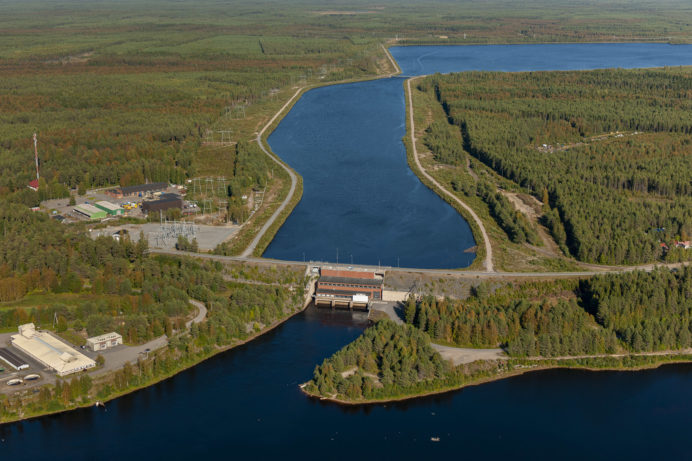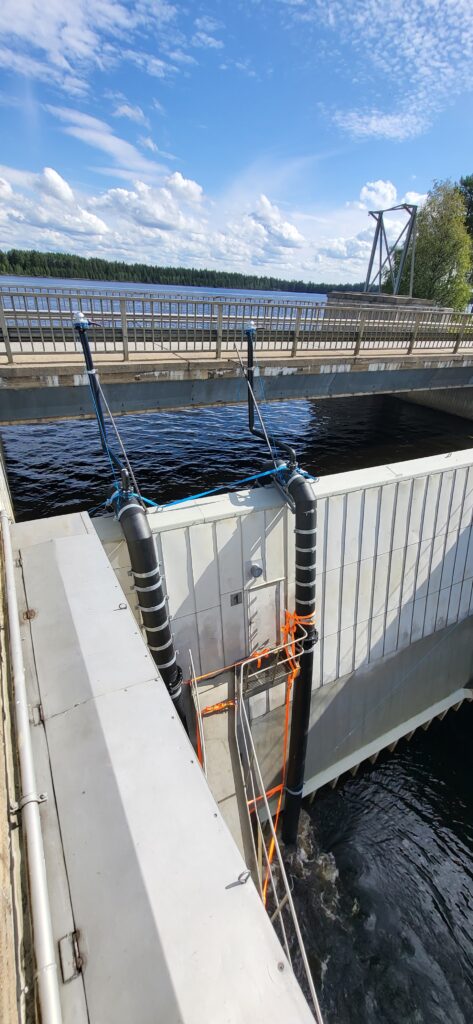
More precise control of the discharged volume of water at the Raasakka hydropower plant on the Iijoki river introduces significant energy savings for PVO-Vesivoima.
It concerns the environmental flow into the old Raasakka riverbed, most of which is discharged between June and October. The volume of water varies from month to month and week to week, depending on the situation.
“We discharge water into the old Raasakka riverbed of the Iijoki river in accordance with our obligations and cooperation agreements. In addition to other discharge routes, we have done this by opening up large floodgates. It is difficult to accurately control the volume of water flowing through the gates. Allowing a small water volume to flow through the large gates also causes vibration and noise pollution in the nearby shore areas,” explains Veli-Matti Hämäläinen, an automation specialist at PVO-Vesivoima.
Precise water volumes with siphon pipes
We had the idea of using siphon pipes on top of the flood gates, with one cubic metre of water discharged through each pipe. This allows us to determine exactly how much water is being discharged into the old riverbed at any given time.
“Major energy savings have already been and will be achieved by this method. At best, we are talking about thousands of megawatt-hours per year.”
There are four pipes in total. Not all of them need to be in place and in use at the same time – one pipe can discharge one cubic metre of water per second. During the summer, the discharged volumes vary between 5 and 10 m3/s, depending on the situation.
A stator in the second generator unit of the Raasakka hydropower plant will also be replaced in the autumn of 2023. The stator is one of the components of the generator: the stationary part fixed onto the machine’s body. The replacement of the stator will improve the plant’s energy efficiency, as the old one is the original, which dates back to the early 1970s.
The siphon pipes can be used to precisely adjust the discharge. Photo by Veli-Matti Hämäläinen.

More heat pumps installed
PVO-Vesivoima has five hydropower plants on the Iijoki river, two in the Kemijoki and one in the Kokemäenjoki river basin. They all contain power plant buildings, maintenance facilities and other facilities, as well as some offices.
Heat pumps have already been installed in many of the power plants, where they mainly provide cooling.
“The power plants include areas where the temperature must not get too high in summer. In winter, the heat pumps can be used for heating as necessary,” Hämäläinen explains.
A two-storey office building of approximately 500 square metres in Raasakka is now heated by a total of five air source heat pumps.
Lighting to be modernised in 2024
There are also plans to install heat pumps at the Pahkakoski power plant in 2024. There is an adjacent training facility where an air source heat pump will help maintain a low baseline temperature that can be quickly raised, even remotely.
At Isohaara on the Kemijoki river, the plan is to renew the lighting system next year. It is a bigger energy-saving measure than you would think at first glance.
“The ceiling lamps there are 400 watt high-pressure sodium lamps. They use a huge amount of energy. In terms of energy savings, this is an operation comparable to the installation of heat pumps, if not a little bigger. Lighting in general has already been renovated at many locations,” Veli-Matti Hämäläinen explains.
Creative thinking in the ceaseless quest for savings
Pohjolan Voima Group and its hydropower company PVO-Vesivoima have been systematically improving their energy efficiency for a long time. The big steps have already been taken.
“Going forward, we’ll really have to use our imagination when thinking about how to save more energy. The big steps always involve the operation of the power plants. When we find something to change there, they’re the big things.”